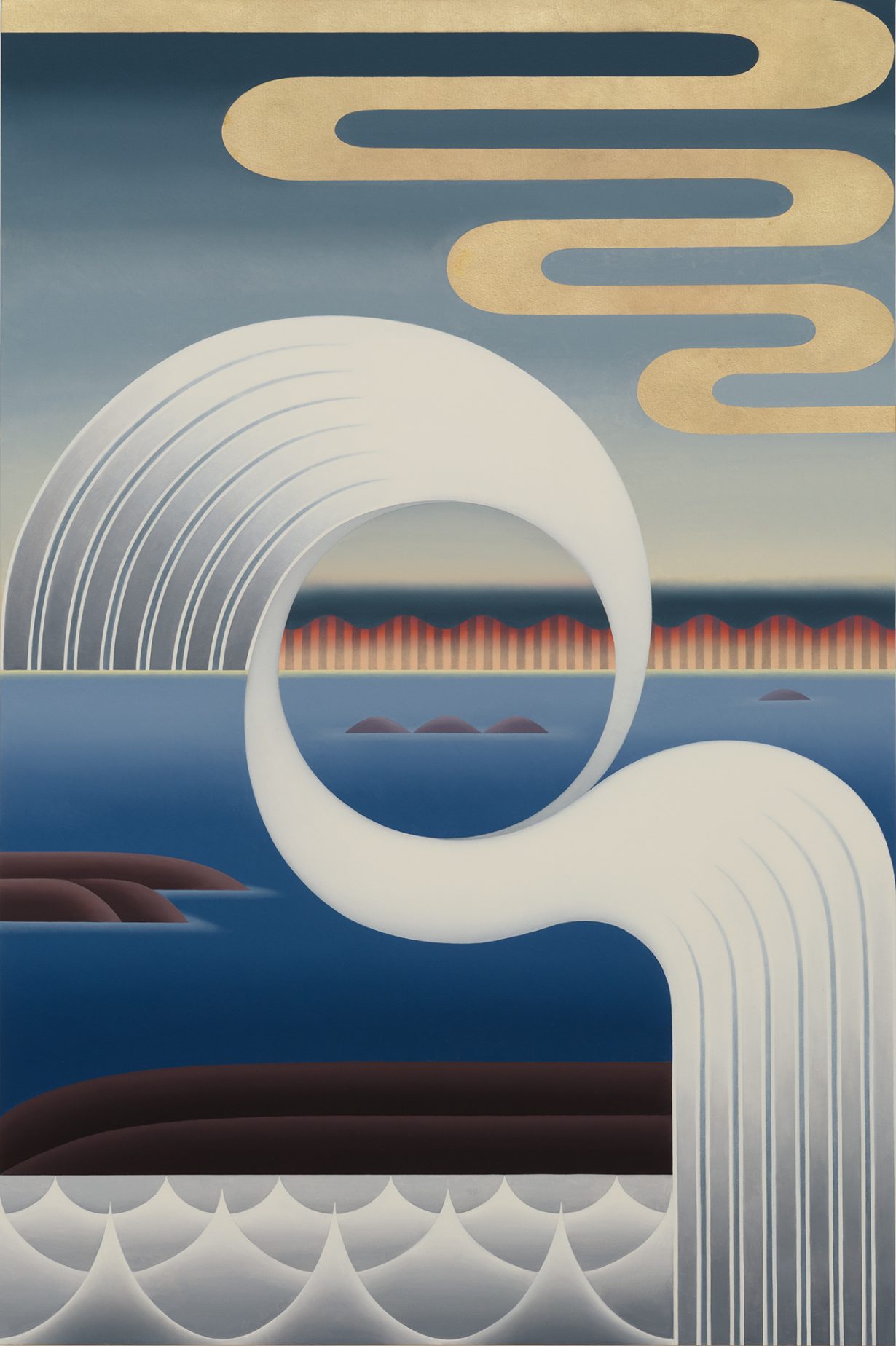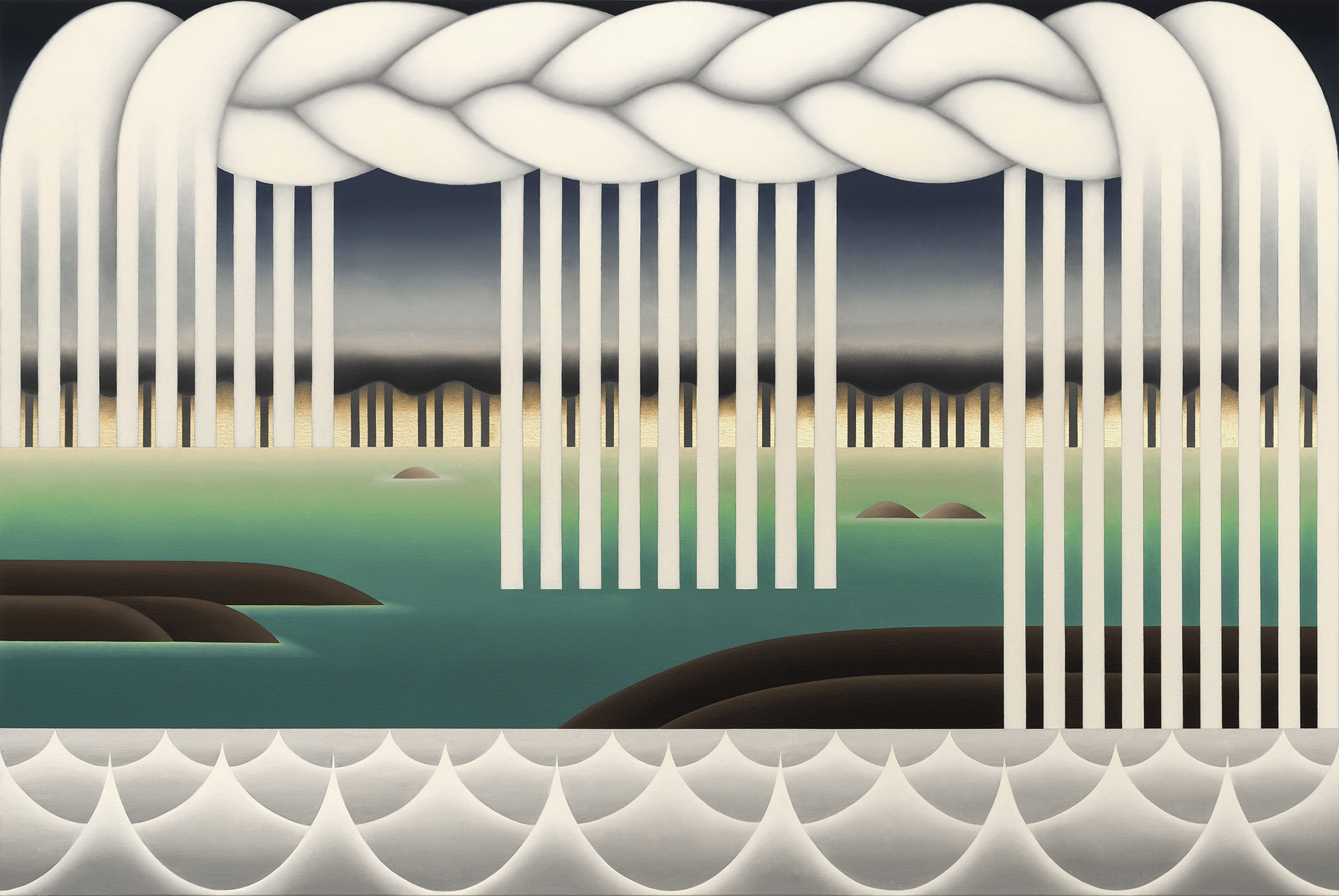The artist’s architectural designs embed within them a critique of art-historical precedents
For the past half-century, artist Takako Yamaguchi has combined diverse motifs to form paintings that subtly critique art-historical precedents, from Ancient Greek architectural tropes and modernist grids to Japanese woodblock print styles and midcentury geometric abstraction – to name a few. In this show of recent, near-abstract seascapes, Yamaguchi is positioned as a radical appropriation artist committed to evading what she calls, in one exhibition text, the ‘then mainstream positions… [of] “the tough”, “the ugly”, “the angry”’ in twentieth-century art, a phrasing that takes aim at the twentieth century’s Western, male avant-garde – and its unfeeling aesthetics, often derived from the harsh processes of mass production in both material and look. Yamaguchi reconfigures the trenchant symbols of her predecessors to form lush, evocative landscapes, rewarding curious viewers with immersive depictions that transcend her references.
Residue (2023) depicts what appears, at first glance, to be a view of the ocean, but closer inspection reveals stencilled vertical bars and blue-white colour gradients in the sky and on the horizon, recalling the geometric abstraction of Frank Stella or Ellsworth Kelly. When Yamaguchi began making art during the early 1970s, grids, lines and colour gradients were the beginning and end of modern art; here, they’re just a part of the scenery. In Accomplice (2025), Yamaguchi reaches further into Western cultural memory: white shapes reminiscent of adornments on Greek ionic columns swirl above a rocky sea. But while many of her forebears eschewed figuration and decorative touches, Yamaguchi embraces their inevitability and slyly suggests how some of her peers’ now-outdated ideals foreclosed the more energetic expressions possible in her own artwork.

Included in Yamaguchi’s paintings are depictions of weavings, stitches and braided patterns – symbols of decorative crafts typically practised by women and historically dismissed in the artworld. These shapes appear alternately confining and liberatory; where the swirling decorations derived from Greek columns burst through Yamaguchi’s flattened planes, in Wrapper (2023) and Stitch (2023), interlocking white chains press down on horizon lines, their creamy ties stretched taut across each canvas. In Procession (2024), however, a knotted hair braid manages to break out of the canvas’s blue sky, its strands descending into straight white channels like rainfall. The storm evokes both the severe shapes of Minimalist sculptors like Dan Flavin or Donald Judd and the loose threads of an unfinished scarf or sweater.
At times, Yamaguchi feels stringently postmodernist, positing herself as a critical collagist of past art. But a more ecstatic thread runs throughout her work. Plenum (2024) features a yellow orb that births white spiralling tendrils that twirl like hair or DNA strands, coming to rest in a vast navy sea. In Trap (2024), ebullient tendrils of gold leaf and dark grey clouds conjure visions of posthurricane sunsets or a stormy daybreak. Within her rigorous designs – Yamaguchi often appears to employ stencils, and marks of her gestural brushwork are hard to come by – the artist also locates a kind of sublime, crafting images that look more akin to the mystical, whirligig expressions of Hilma af Klint or Agnes Pelton’s transcendental, southwestern-hued scenes than to the ‘tough’ and ‘ugly’ pretences of her male rivals. While not explicitly feminist, Yamaguchi hits these men where it hurts: their art.
Takako Yamaguchi at The Museum of Contemporary Art, Los Angeles, through 4 January
From the Autumn 2025 issue of ArtReview Asia – get your copy.
Read next Minoru Nomata’s guide to nowhere
